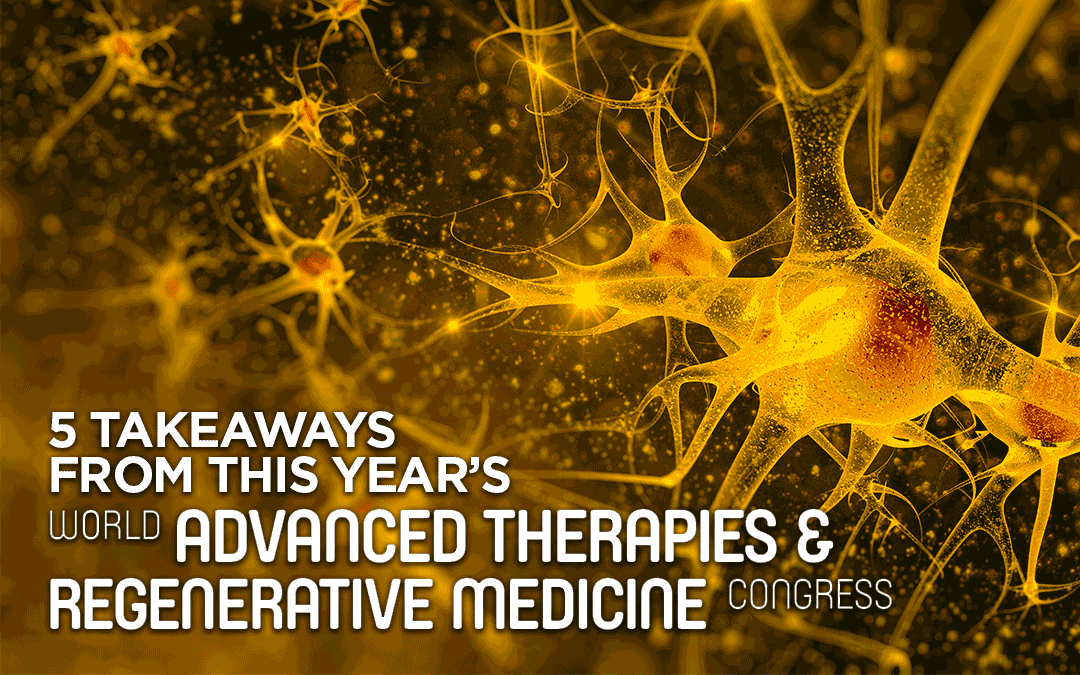That was abundantly clear from this year’s World Advanced Therapies & Regenerative Medicine Congress, which is now in its fifth year.
This year’s event included a dedicated cord blood section, as various industry professionals shared updates about their research.
Here are the top 5 things we learned at the congress – and what they could mean for your baby:
1. Cord blood continues to show promise treating brain injuries and neurological disorders
Dr Joanne Kurtzberg, who has worked with cord blood for more than 30 years, shared updates about the various clinical studies that are being carried out by her team at Duke University, North Carolina.
As we have previously reported, researchers at Duke have successfully used cord blood to treat a number of patients with Hurler syndrome, a rare genetic disorder that affects infants and can damage cognitive function, as well as hypoxic ischemic encephalopathy (HIE). One year after cord blood transfusion, patients had sustained improvement and normal cognitive function.
Kurtzberg also confirmed that 2/3 of patients treated with cord blood for autism continued to see improvements and, in some cases, therapy had even down-regulated the severity of their condition.
The university’s cerebral palsy clinical trial continues to show promise. Kurtzberg shared a video of a patient who can walk after receiving a cord blood transfusion. She said that children had seen up to 30% more improvement than was expected for their age.
At a glance: Kurtzberg’s presentation suggests your baby’s cord blood could treat brain injuries as well as neurological disorders like autism, cerebral palsy and stroke.
2. Cord blood could revolutionise conventional medicine
Did you know that ½ of approved cellular therapies use cord blood?
It was clear throughout the congress that treatment opportunities using cord blood stem cells are on the rise. Crucially, that won’t just mean that your child can access better medical treatments, but also that they might cost less.
To this end, a presenter at the event shared an interesting graph explaining the cost of a regenerative therapy. Although there is often a higher cost upfront, better recovery rates and improved symptoms means that cord blood therapy could reduce the price of healthcare in the long-term.
At a glance: storing cord blood could give your child access to better, and potentially more cost-effective, treatment options throughout their life.
3. Cord blood could treat diabetes, multiple sclerosis and more
Several researchers shared the results on their work during the congress, and diabetes was mentioned several times. Another presenter shared their work treating endothelial dysfunction, which causes underlying metabolic disorders that can lead to diabetes.
Dr Maria Craig, meanwhile, spoke about preventing Type 1 diabetes. Shortly after birth, patients’ immune systems attack and destroy the beta cells we are born with. By using T-regulatory cells found in cord blood, however, it could be possible to control immune responses and prevent patients from losing their all-important beta cells.
At a glance: if your baby ever contracts a condition like diabetes or MS, their cord blood could significantly improve their symptoms.
4. We are still discovering the uses of cord blood
In the past, cord blood has been primarily used for blood transplants and as we mentioned, is likely to be integral to a range of regenerative therapies.
The possibilities stretch beyond this, however, and it seems that we have only just scratched the surface of cord blood’s potential…
- NK Cells – natural killer cells, which are found inside cord blood, have the potential to fight and kill cancer. Because they come from cord blood, they also have a much lower risk of rejection than conventional donor transplants.
- Exosomes – though we often focus on the potential of stem cells, scientists have also been researching the exosomes present inside the umbilical cord as a therapeutic tool, particularly for diabetes. In fact, their research showed that exosomes accelerated the healing process for 90% of patients with diabetic ulcers. Importantly, unlike cells, exosomes are not living – which means they are stable and non-perishable and are not rejected by the immune system.
At a glance: In the future, we can look forward to innovative new regenerative therapies which go beyond stem cell science.
5. Cord blood banking is fully compatible with delayed cord clamping
Our own Chief Scientific Officer, Dr Jeffrey Drew, also shared some research at the congress about cord blood banking and delayed cord clamping.
In the past, there has been a perceived conflict between these two birth options, because waiting between one and 30 minutes before cutting the cord significantly reduces the amount of blood remaining for a successful stem cell collection. On average, the reduction can be from 55ml with immediate cord clamping to as little as 10ml.
For the past two years, we have been present at almost 2,000 births and surveyed parents about their choice of immediate, delayed or optimal cord clamping. We then measured the volume of cord blood collected according to the length of delay.
Our research showed the amount of cord blood collected barely changes between 10 and 30 minutes after birth, which suggests that there is little benefit to waiting half an hour for cord clamping.
At a glance: cord blood banking and delayed cord clamping are compatible. If parents want to delay clamping, they can still collect cord blood with our TotiCyte technology. It preserves 3X more stem cells and therefore resolves any conflict between the two options.
Request a Welcome Pack
Find out more about cord blood banking by downloading a Welcome Pack now.








